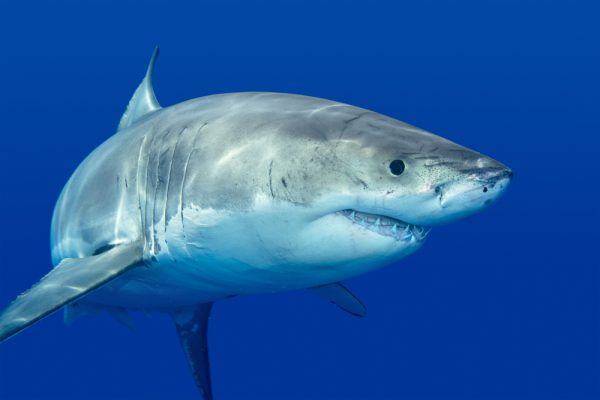
The last thing any of want to see when we’re taking a dip in the ocean is a shark, and we sure don’t want to be close enough to admire its singular jaw structure.

The fact is, however, that sharks have unique jaws. Because the shark’s skeleton contains no bone, only cartilage, areas requiring extra strength and support (like the jaws) need special adaptations. A shark’s upper jaw rests below its skull and can be detached when it attacks its prey because it’s not attached to its skull which, in other animals, usually acts as a supporting structure. This explains a few scenes out of the movie, “Jaws.” The way a shark’s jaws are set allow it to thrust its entire mouth forward to grab onto its prey.
In dogs, a terribly overshot bite can be called a “shark mouth,” a situation in which the top jaw is physically longer than the bottom jaw. Fanciers can anxiously wait for their puppy’s adult teeth to come in, and more than one person has been disappointed when the bite in their promising puppy is off: Most breed standards call for a scissors or level bite, and in many of them, overshot or undershot bites are penalized.
To read more on jaws in the dog, and specifically the underjaw, check out this earlier post:
Top image: Smiling Chihuahua/Deposit Stock Photo used because we love the photo, not because overbites are an issue in the breed.
Center Image: A great white shark swimming at Guadalupe Island looking for food, Deposit Stock Photo
